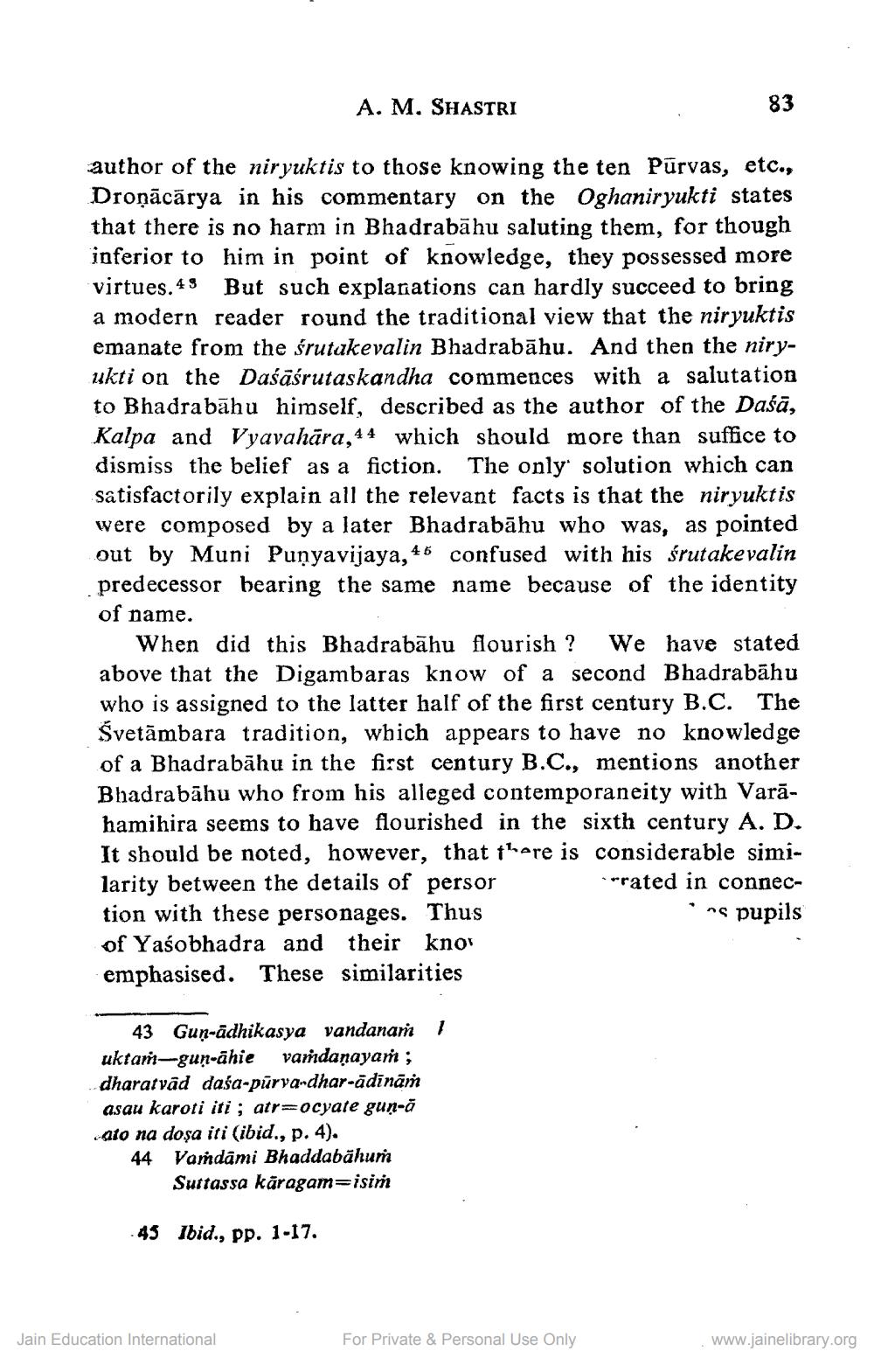________________
A. M. SHASTRI
83
author of the niryuktis to those knowing the ten Pūrvas, etc., Droņācārya in his commentary on the Oghaniryukti states that there is no harm in Bhadrabāhu saluting them, for though inferior to him in point of knowledge, they possessed more virtues.48 But such explanations can hardly succeed to bring a modern reader round the traditional view that the niryuktis emanate from the śrutakevalin Bhadrabāhu. And then the niryukti on the Daśāśrutaskandha commences with a salutation to Bhadrabāhu himself, described as the author of the Daśā, Kalpa and Vyavahāra, 44 which should more than suffice to dismiss the belief as a fiction. The only solution which can satisfactorily explain all the relevant facts is that the niryuktis were composed by a later Bhadrabāhu who was, as pointed out by Muni Punyavijaya, 46 confused with his frutakevalin predecessor bearing the same name because of the identity of name.
When did this Bhadrabāhu flourish? We have stated above that the Digambaras know of a second Bhadrabāhu who is assigned to the latter half of the first century B.C. The Svetāmbara tradition, which appears to have no knowledge of a Bhadrabāhu in the first century B.C., mentions another Bhadrabāhu who from his alleged contemporaneity with Varāhamihira seems to have flourished in the sixth century A. D. It should be noted, however, that there is considerable similarity between the details of persor --rated in connection with these personages. Thus
ns pupils of Yaśobhadra and their knor emphasised. These similarities
1
43 Gun-adhikasya vandana uktan--gun-āhie vamdanayan; dharat vad daśa-pūrva-dhar-ādīnām asau karoti iti ; atr=ocyate gun-ā ato na dosa iti (ibid., p. 4). 44 Vaṁdami Bhaddabāhur
Suttassa karagam=isiń
45 Ibid., pp. 1-17.
Jain Education International
For Private & Personal Use Only
www.jainelibrary.org




